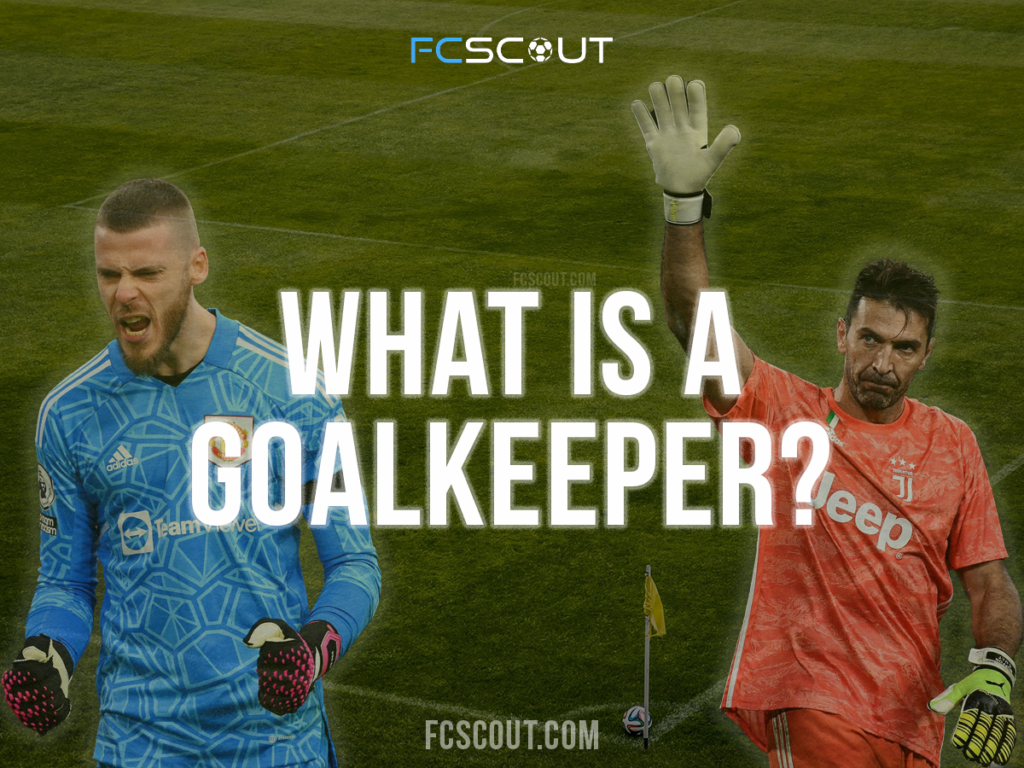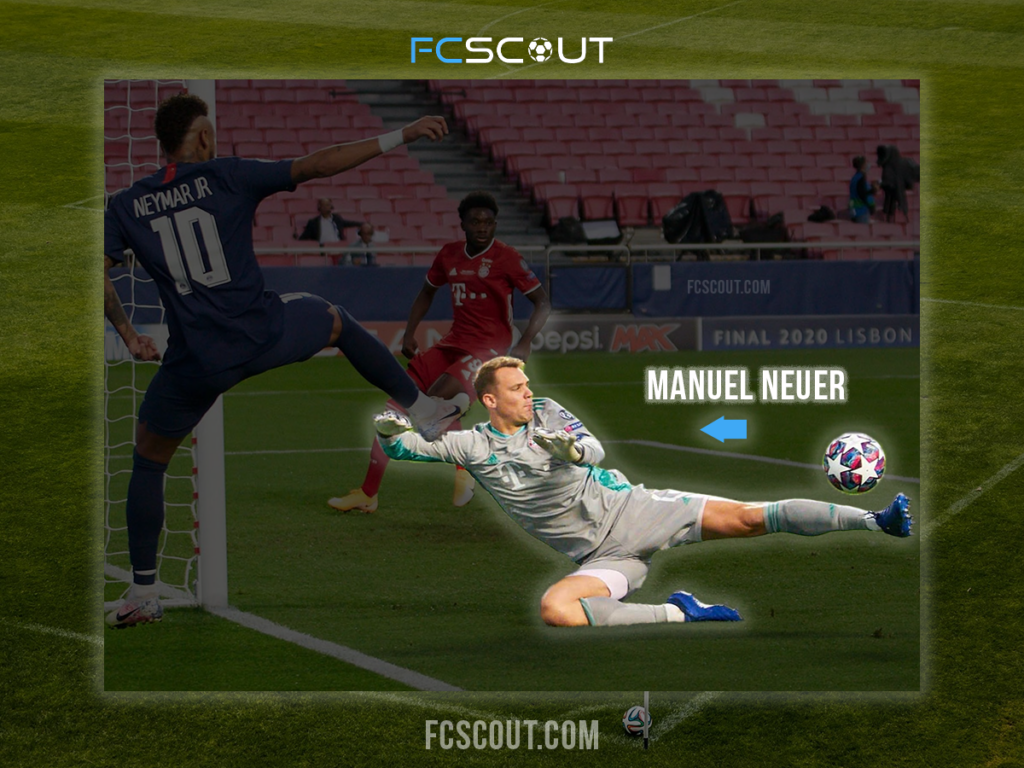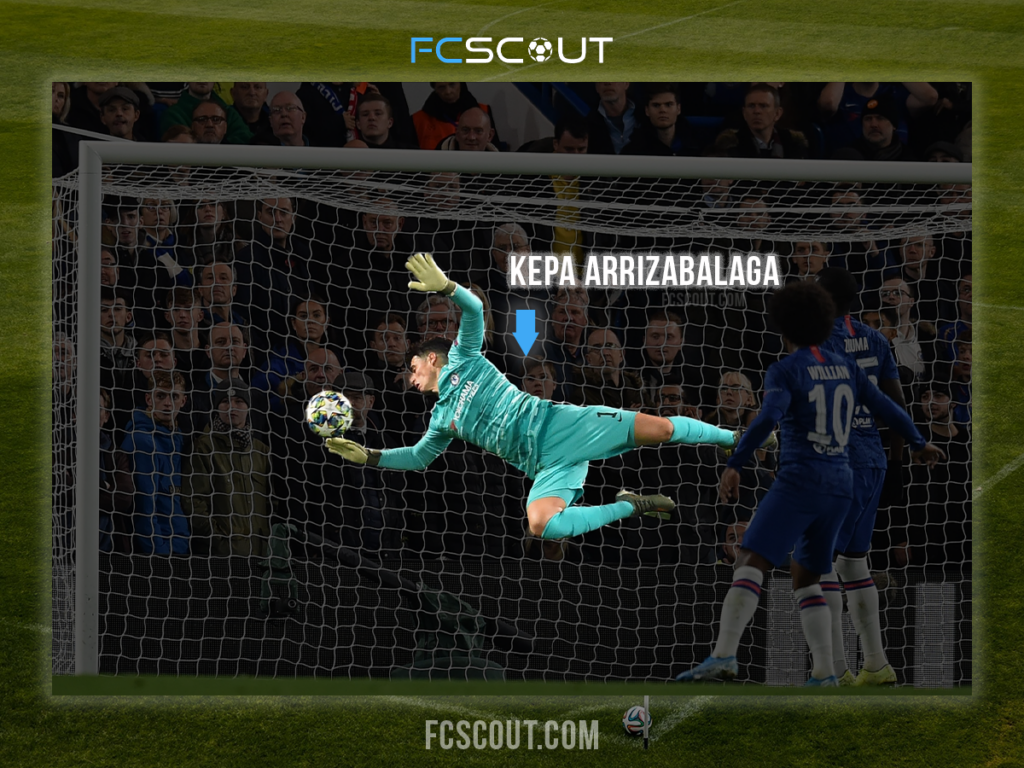What is a Goalkeeper in soccer?
Soccer is one of the most popular sports in the world, played and watched by millions of people globally. It is a sport that requires teamwork, technical skill, and tactical awareness to be successful. One of the key positions in soccer is the goalkeeper, whose primary responsibility is to prevent the opposing team from scoring. In this article by fcscout.com, we will explore the role of a goalkeeper in soccer, including their responsibilities, characteristics, tactics, skills, and famous goalkeepers in the sport.

Understanding Soccer Goalkeepers
A. Definition of a goalkeeper In soccer, a goalkeeper is a player who is tasked with protecting the goal and preventing the opposing team from scoring. They are the only player on the field who is allowed to use their hands, but only within their penalty area. The goalkeeper is often considered the last line of defence and is critical to a team’s success.
Roles and responsibilities of a goalkeeper
Goalkeepers have a variety of roles and responsibilities on the soccer field. Some of their main duties include:
- Stopping shots The goalkeeper’s primary responsibility is to stop shots on goal. They need to be able to make quick decisions and react quickly to shots from opposing players.
- Organizing the defence The goalkeeper needs to communicate effectively with their defenders, organizing the defence and ensuring that everyone is in the right position.
- Distribution of the ball The goalkeeper needs to be able to distribute the ball effectively, whether through throwing, kicking or rolling it out to their teammates.
- Communication Effective communication is essential for goalkeepers, as they need to be able to coordinate with their teammates and communicate any changes in tactics or strategy.

Types of goalkeepers
There are several types of goalkeepers in soccer, each with their specific roles and responsibilities. The most common types of goalkeepers include:
- Shot-stopper A shot-stopper is a goalkeeper who excels at stopping shots on goal. They are typically known for their reflexes and ability to react quickly to shots from opposing players.
- Sweeper-keeper A sweeper-keeper is a goalkeeper who plays further up the field and acts as an auxiliary defender. They are often more involved in the team’s build-up play and need to be able to distribute the ball effectively.
- Distributor A distributor is a goalkeeper who excels at distributing the ball to their teammates. They need to be able to make accurate passes and know when to throw, kick or roll the ball to their teammates.
- Traditional goalkeeper A traditional goalkeeper is a player who excels at all aspects of goalkeeping, including shot-stopping, organization, communication, and distribution. They are often considered the best all-around goalkeepers.
Characteristics of Successful Goalkeepers
A. Physical Attributes Successful goalkeepers need to have a combination of physical and mental attributes to be effective on the field. Some of the essential physical attributes for goalkeepers include:
- Height: Taller goalkeepers are often better equipped to reach high shots and crosses and can cover more of the goal area.
- Agility: Goalkeepers need to be agile to make quick movements and react to shots from opposing players.
- Reflexes: Quick reflexes are essential for goalkeepers, as they need to be able to react quickly to shots on goal.
- Strength: Goalkeepers need to be strong to deal with physical challenges and win the ball in the air.

Mental Attributes
Goalkeepers also need to have strong mental attributes to be successful. Some of the essential mental attributes for goalkeepers include:
- Focus: Goalkeepers need to be able to maintain focus for long periods, staying alert and focused on the game.
- Confidence: Successful goalkeepers need to have confidence in their abilities and be willing to take risks when necessary.
- Composure: Goalkeepers need to be able to remain calm and composed under pressure, even in high-stress situations.
- Decision-making: Effective decision-making is essential for goalkeepers, as they need to be able to make quick decisions and react to changes in the game.
Tactics Used by Goalkeepers in Soccer
Positioning
Positioning is critical for goalkeepers, as they need to be in the right place at the right time to make saves. They need to be able to read the game and anticipate where the ball is going to be played.
Set-pieces
Set-pieces, such as corner kicks and free kicks, are important moments in a game where goalkeepers need to be at their best. They need to be able to communicate effectively with their defenders and position themselves well to deal with any potential threats.
Penalty kicks
Penalty kicks are one-on-one situations between the goalkeeper and an opposing player, and they can often be a deciding factor in a game. Goalkeepers need to be able to read the shooter’s body language and make quick decisions on which direction to dive.
Sweeping
Sweeping involves playing further up the field and acting as an auxiliary defender. Goalkeepers need to be able to read the game well and know when to come out of their penalty area to clear the ball.
E. Handling the ball Goalkeepers need to be able to handle the ball effectively, using their hands to catch, punch or parry shots on goal. They also need to be able to deal with crosses effectively, using their height and strength to win aerial challenges.
Skills and Techniques Required for Effective Goalkeeping
Shot-stopping: Shot-stopping is the most important skill for goalkeepers. They need to be able to make saves and prevent the opposing team from scoring. Some of the essential shot-stopping techniques include:

Diving: Diving is a crucial technique for goalkeepers, as it allows them to reach shots that are out of their immediate reach.
Blocking: Blocking involves getting in the way of the ball to prevent it from going into the goal. It is a technique used when the goalkeeper does not have time to make a diving save.
Catching: Catching involves using the hands to catch the ball after a shot on goal. It is a technique used when the shot is low and within the goalkeeper’s reach.
Distribution: Effective distribution is critical for goalkeepers, as they need to be able to start attacks from the back. Some of the essential distribution techniques include:
Throwing: Goalkeepers need to be able to make accurate throws to their teammates, allowing them to start attacking moves quickly.
Kicking: Kicking is another important distribution technique, allowing goalkeepers to launch the ball up the field to their teammates.
Rolling: Rolling the ball out is a technique used when the goalkeeper needs to start an attack quickly and wants to maintain possession of the ball.
Communication: Communication is essential for goalkeepers, as they need to be able to coordinate with their defenders effectively. They need to be able to give clear instructions and make sure that everyone is in the right position.
Dealing with crosses: Dealing with crosses is an essential skill for goalkeepers, as they need to be able to win aerial challenges and prevent opposing players from scoring with their heads. They need to be able to time their jumps correctly and use their height and strength to outmuscle opposing players.
Famous Soccer Goalkeepers and their Achievements
Lev Yashin: Lev Yashin was a Soviet soccer goalkeeper who is considered one of the greatest goalkeepers of all time. He played for Dynamo Moscow and won numerous titles with the club, including five Soviet Top League titles and three Soviet Cups. Yashin was known for his innovative goalkeeping techniques and was the first goalkeeper to wear gloves.
Dino Zoff: Dino Zoff is an Italian former soccer player who played as a goalkeeper. He played for Juventus and the Italian national team and won numerous titles, including the World Cup in 1982. Zoff is known for his longevity, as he played at the highest level until he was 41 years old.
Peter Schmeichel: Peter Schmeichel is a Danish former soccer player who played as a goalkeeper. He played for Manchester United and won numerous titles with the club, including five Premier League titles and the Champions League in 1999. Schmeichel was known for his commanding presence and excellent shot-stopping abilities.
Gianluigi Buffon: Gianluigi Buffon is an Italian soccer goalkeeper who currently plays for Parma. He has won numerous titles throughout his career, including nine Serie A titles and the World Cup in 2006. Buffon is known for his shot-stopping abilities and leadership on the field.
Manuel Neuer: Manuel Neuer is a German soccer goalkeeper who currently plays for Bayern Munich. He has won numerous titles with the club, including the Champions League in 2013 and 2020. Neuer is known for his innovative playing style, often playing further up the field to act as an auxiliary defender.
Conclusion
In conclusion, goalkeepers play a crucial role in soccer, tasked with preventing the opposing team from scoring goals. Successful goalkeepers need to have a combination of physical and mental attributes, including height, agility, reflexes, focus, confidence, composure, and decision-making skills. They also need to be able to execute a range of skills and techniques, including shot-stopping, distribution, communication, and dealing with crosses. Famous goalkeepers such as Lev Yashin, Dino Zoff, Peter Schmeichel, Gianluigi Buffon, and Manuel Neuer have demonstrated the importance of the position and the impact that great goalkeepers can have on a team’s success. As soccer continues to evolve and change, goalkeepers will need to adapt their tactics and techniques to remain effective and help their teams achieve their goals.
EXPLORE MORE CLUBS!
Explore more professional clubs by continent.






